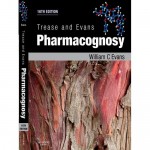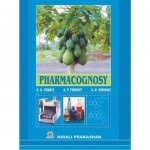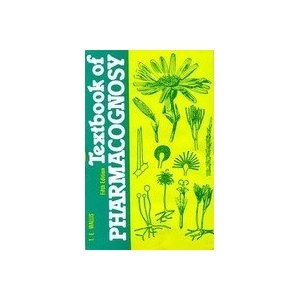Pharmacognosy is one of the core areas of Pharmaceutical Sciences which deals with study of drugs of natural origin. From the point of view of competitive examinations like GPAT, it is very essential to have a thorough knowledge of this subject because a good number of questions (usually 15-20) are asked from this subject alone. If we include Phytochemistry (Chemistry of Natural products) the total number of questions that can be expected from these two subjects can easily exceed 30. This indicates that these two subjects will play a big role in the final GPAT exam. However, due to a general lack of interest and deficiency of faculty who specialize in these subjects, many GPAT aspirants often find it difficult to prepare these subjects thoroughly. In this discussion, we try to highlight some important topics to read and books to refer for Pharmacognosy.
Top 3 Books for Pharmacognosy
It is always a good idea to refer at least two text books for any subject. As far as Pharmacognosy is concerned, almost all the universities in India prescribe the following text books for Undergraduate as well as Post Graduate course in Pharmacognosy.
1.Pharmacognosy – Trease and Evans, Elsevier Publications
2.Pharmacognosy – C.K. Kokate et.al., Nirali Prakashan
3.Pharmacognosy – T.E Wallis, Churchill Livingstone Publications
It is advised that GPAT aspirants purchase at least one text book out of these three for ready reference. The other two books can be borrowed from the library as the need arises.
Let us now look at some salient features of these books.
1. Trease and Evans – Pharmacognosy
This is undoubtedly a standard and good book for understanding the subject in depth. It covers all the major categories of crude drugs that are included in the syllabi of various universities in India. Not only that, it also covers several other topics of importance like Alternative systems of medicine, quality control, examination of crude drugs by microscopic techniques, plant growth regulators and basic metabolic pathways in plants. All the chapters are given up-to-date references from standard sources of literature. References are very important to establish the authenticity of any printed literature.
Topics to be read:

If we go through the questions papers of GPAT (2010-2012) and GATE (2009 and earlier), we can easily identify at least 5 questions which have been taken from this text book. Some of the important topics that are usually asked from this text book are:
Classification, Biological Sources, Synonyms, Chemical constituents and tests, Microscopic characters, Uses, Adulterants and Substitutes of
- Carbohydrates
- Volatile Oils
- Alkaloids
- Glycosides
- Resins
- Colouring and Flavouring agents
- Lipids
Apart from these, questions have also been asked from Plant growth regulators, quality control techniques, nutraceuticals, production of secondary metabolites.
2. C.K Kokate et.al.,- Pharmacognosy
Authored by India’s well known Pharmacognosy teacher and researcher, this text book is very popular among undergraduate students. It is clear and concise in its composition and very easy to understand. The language used is very simple and therefore, it has become a hit among UG students. In fact, most of the syllabi in Indian universities is based on this text book and therefore students usually finish reading all the topics at least once from this book by the time they enter the final semester.
Topics to be read

The following are considered to be hot topics which are usually asked from this book apart from those mentioned under Trease and Evans.
- Methods of Classification of Crude drugs
- Cultivation, collection and processing of crude drugs
- Plant tissue culture
- Analytical Pharmacognosy
- Drugs of Mineral origin
- Enzymes and protein drugs
- Marine drugs
- Natural excipients, fibres and sutures
- Ayurvedic formulations and terms used in Ayurveda
Highlight: The appendices given at the end of the text book are very useful for competitive exams like GPAT and NIPER. The section on list of all major chemical tests covered in the text book is very useful because a lot of questions can be answered if this list is memorized correctly.
3. T.E Wallis – Pharmacognosy
This book is usually referred for extra information, especially about microscopic characters of crude drugs. It is a very good text book to understand the practical aspects of the subject as it covers the morphological and microscopic characters of a huge number of crude drugs in detail.
Topics to be read:
- Microscopic characters of some important crude drugs under Alkaloids, Glycosides, Volatile oils and Carbohydrates
Important characters of substitutes of crude drugs used in other countries. For example : Cinnamon
After knowing the importance of each text book, let us now make an action plan to study this subject in an innovative and effective way so that it retains your interest till you finish all the exams.
First of all, the mindset the Pharmacognosy is boring and difficult to understand should be done away with. Pharmacognosy is in fact the easiest subject among all and if studied properly, can do wonders to your GPAT score.
- Make a list of all the crude drugs which are important after properly scrutinizing the syllabus and previous question papers of at least 10 years.
- For easy reference before the exam, prepare your own notes in a concise but informative format. The best way is to prepare tables for every class of crude drugs. This template should help you in preparing such tables.
|
Alkaloids |
|||||||
|
S.no |
Official name of Crude Drug |
Biological Source |
Synonyms |
Important Chemical Constituents |
Chemical tests |
Uses |
Adulterants/Substitutes |
- Use ball pens/sketch pens of different colours to identify drugs which should be given more priority while revising. Ex: Red – Highest, Blue – Moderate, Green – Least. Order of priority should be decided based on frequency of questions appearing in previous exams as well as mock tests.
- For miscellaneous topics like microscopic techniques, standardization of crude drugs, ayruvedic pharmacy etc., make a list of important points as you are reading the topic. Use symbols like “ * ” or underline words with coloured pens so that you can read those points first, every time you open the notes.
- Last but not the least, always make sure that you have read each topic at least once from two text books namely, Trease and Evans and C.K Kokate. As most of you must have referred C.K Kokate for your semester exams, you must make it a point to study Trease and Evans more often while preparing for GPAT.
This concludes our discussion on Books and topics for Pharmacognosy. If you need any more tips then do comment below. We will be more than happy to help you because we are also Pharmacists who cracked GPAT (earlier GATE-PY)
